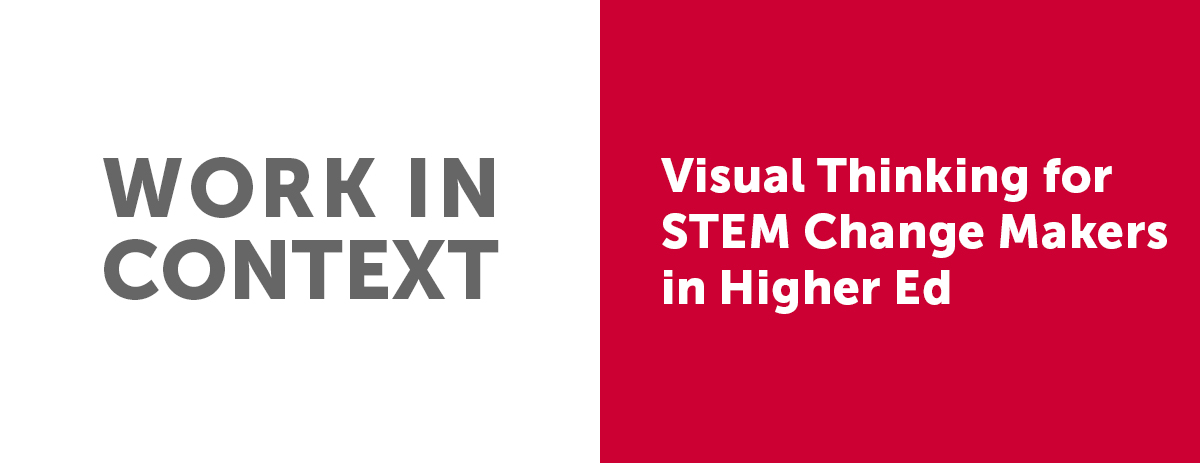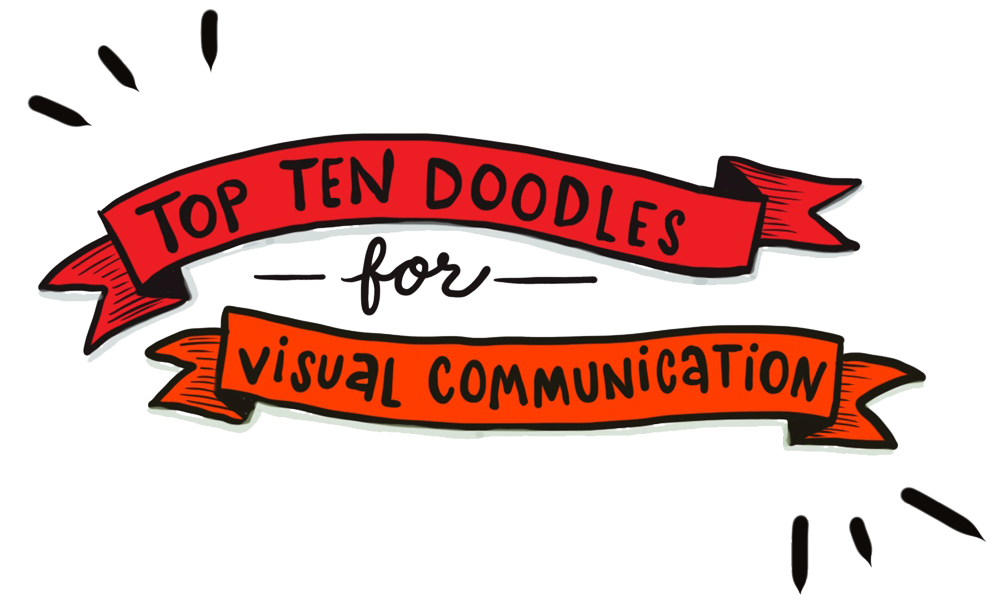In my new series Work in Context I explore a recent client collaboration to paint a portrait of how visual thinking is used in real life – and then, how imagery can continue to communicate and have value, above and beyond the original assignment.
In an informal interview with a client, I seek to discover answers to questions such as:
- How is visual thinking used in real-life situations?
- What’s the story behind why the project was commissioned?
- What impact has the project had?
- How else can the project be utilized – does it have life beyond the original deliverable? Can it continue to provide value?
- How else can a Visual Practitioner help individuals and groups with messaging and storytelling?
 In this inaugural post, I chat with Julia Williams, Professor of English at Rose-Hulman Institute of Technology in Terre Haute, Indiana, and author of Making Changes in STEM Education: The Change Maker’s Toolkit, a research-based, practice-focused guide to achieving change in STEM (and truly an enjoyable read, with applications beyond STEM). She is Principal Investigator on the National Science Foundation’s ‘REvolutionizing engineering and computer science departments’ (RED) Participatory Action Research (PAR) project, a practice-research collaboration that provides customized faculty development support for 26 RED project teams. She has also competed in the show “Jeopardy” in their professors tournament! Dr. Julia Williams is on Twitter @doctorjdub.
In this inaugural post, I chat with Julia Williams, Professor of English at Rose-Hulman Institute of Technology in Terre Haute, Indiana, and author of Making Changes in STEM Education: The Change Maker’s Toolkit, a research-based, practice-focused guide to achieving change in STEM (and truly an enjoyable read, with applications beyond STEM). She is Principal Investigator on the National Science Foundation’s ‘REvolutionizing engineering and computer science departments’ (RED) Participatory Action Research (PAR) project, a practice-research collaboration that provides customized faculty development support for 26 RED project teams. She has also competed in the show “Jeopardy” in their professors tournament! Dr. Julia Williams is on Twitter @doctorjdub.
And, since we both are named Julia, in the Q&A below I’ve used our initials instead of our first names to avoid confusion. I’ve added a few clarifying notes of my own below her responses.
Can you briefly describe the project(s) you wanted to work on with JR?
JW: I asked JR to collaborate with me on posters to present at the national conference of the American Society for Engineering Education. The poster content comes from a National Science Foundation project, and each year, NSF asks us to give a poster presentation to other project teams. The poster presentations occur in a large conference exhibit hall; the setting isn’t ideal, and it is difficult to make your project stand out from the crowd.
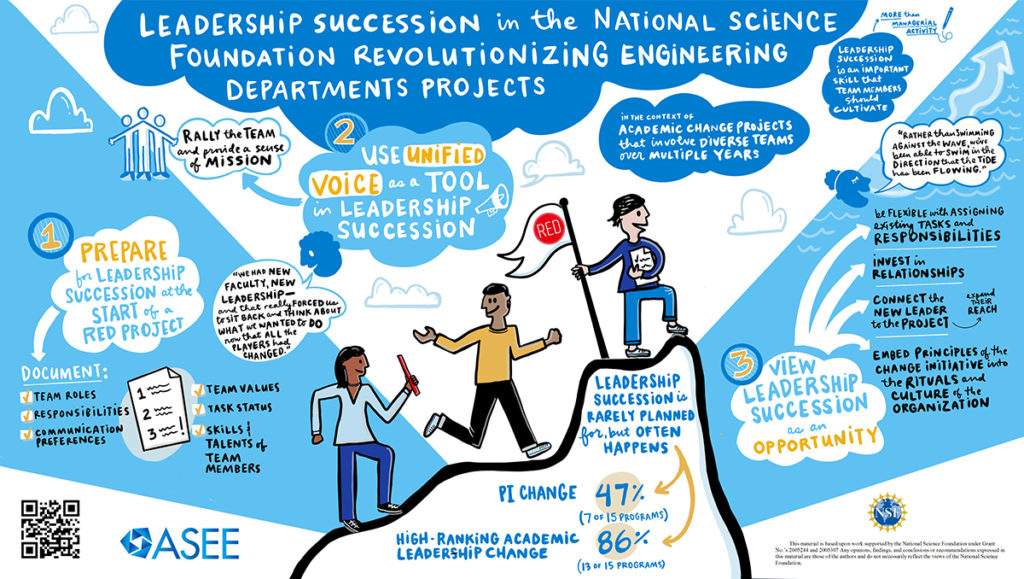
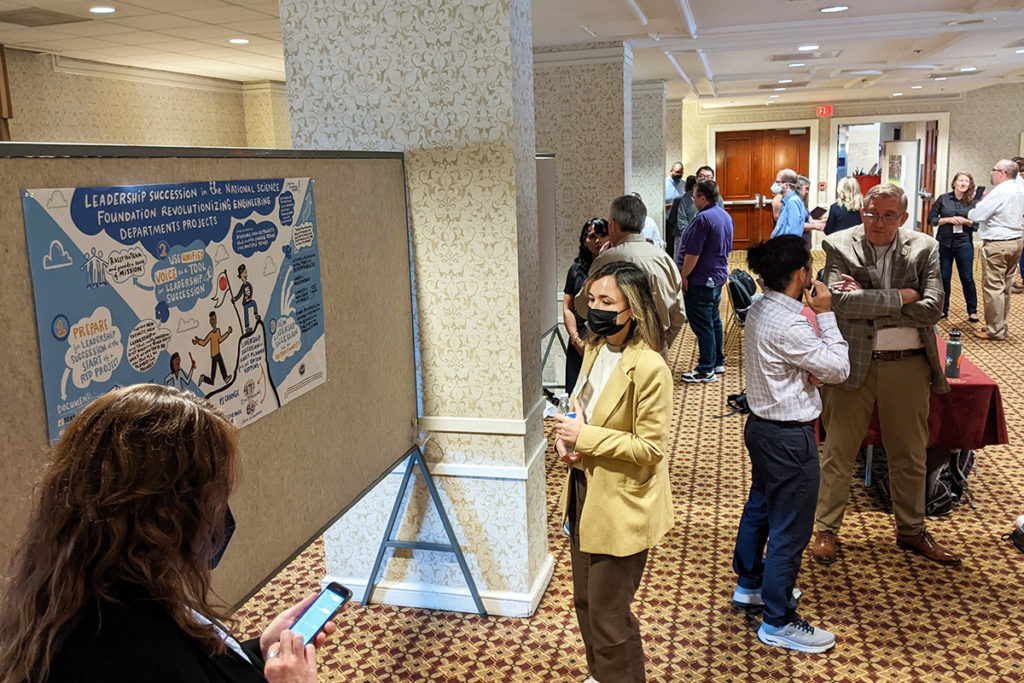
[JR: In addition to the ASEE posters, I have also done live graphic recording for REDCON (Revolutionizing Engineering and Computer Science Departments Conference), where teams meet annually as a Community of Practice to learn change tools and apply them to their own projects.]
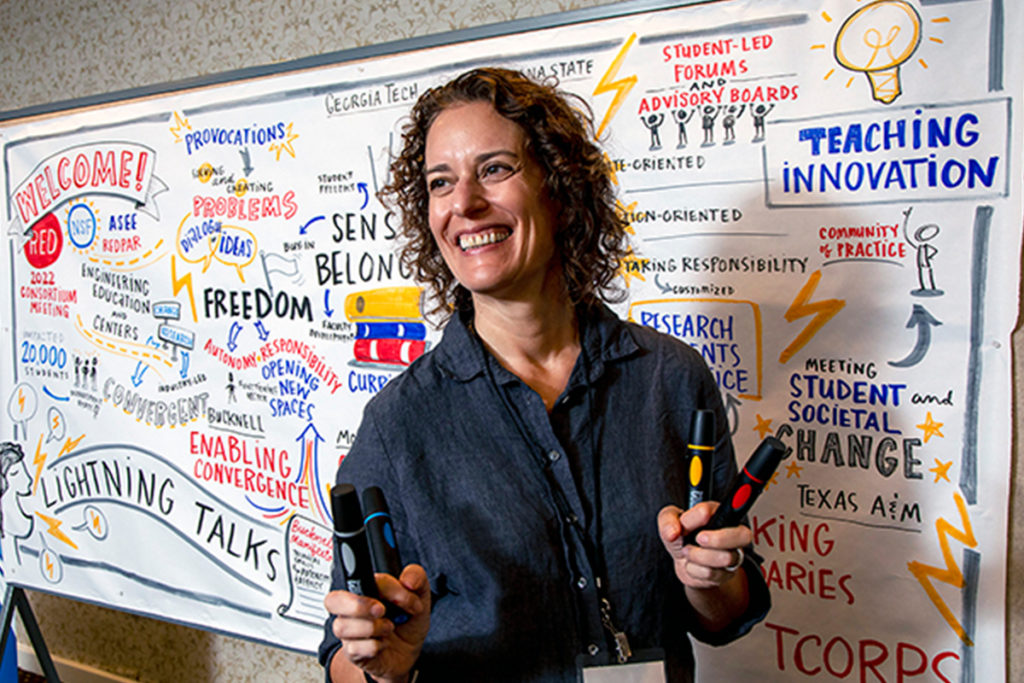
Initially, why did you approach JR with this project(s)? Why did you think the project(s) would benefit from a visual approach?
JW: We saw working with Julia as a way to make our project work visually compelling and distinctive. The attendees at the session are very visual people; they are engineers who are used to working on models, designs, etc. So we thought having a visually compelling poster would appeal to them.
[JR: I created two ASEE posters, one in 2019 and one in 2022. The first one, below, was about using an impact tool to help change makers focus their communication to address stakeholders’ concerns, while the second, above, was about leadership succession in change projects.]
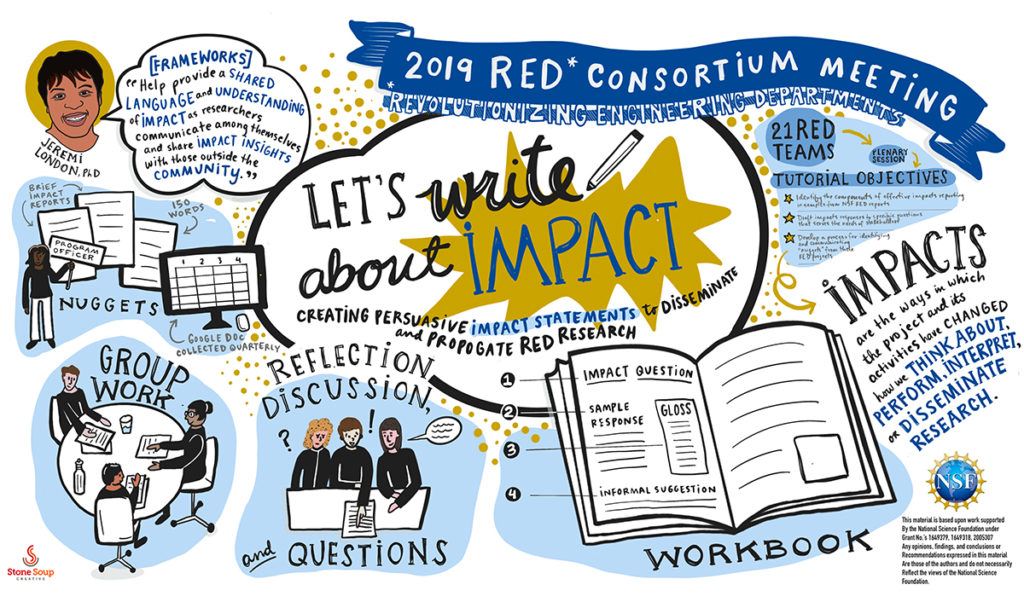
What were the results? Were you aware of any impact?
JW: That’s an easy one! As my collaborator and I stood by our poster and watched attendees walking by, one after another of them looked at our poster, slowed down to look more carefully, then stopped at our poster to soak it in. And every single one of them asked, “Who designed your poster?!” They hadn’t seen anything like it before!
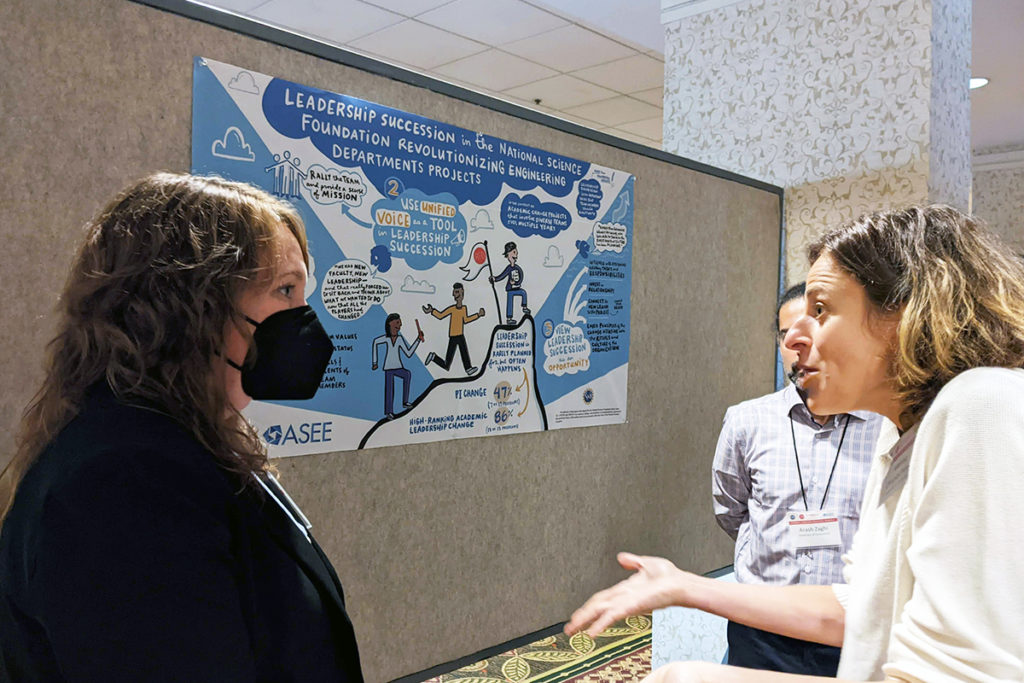
Were you able to use what JR created in other ways beyond what you originally anticipated as the final deliverable(s)?
JW: I have been using clips from the poster in all sorts of ways. I use a clip from the poster as the background for my LinkedIn profile. We used a clip as a background for an upcoming conference website. Once you have a powerful image like Julia is able to make, you can find all sorts of ways to use it. I haven’t quite made the move to t-shirts and coffee mugs, but I could!
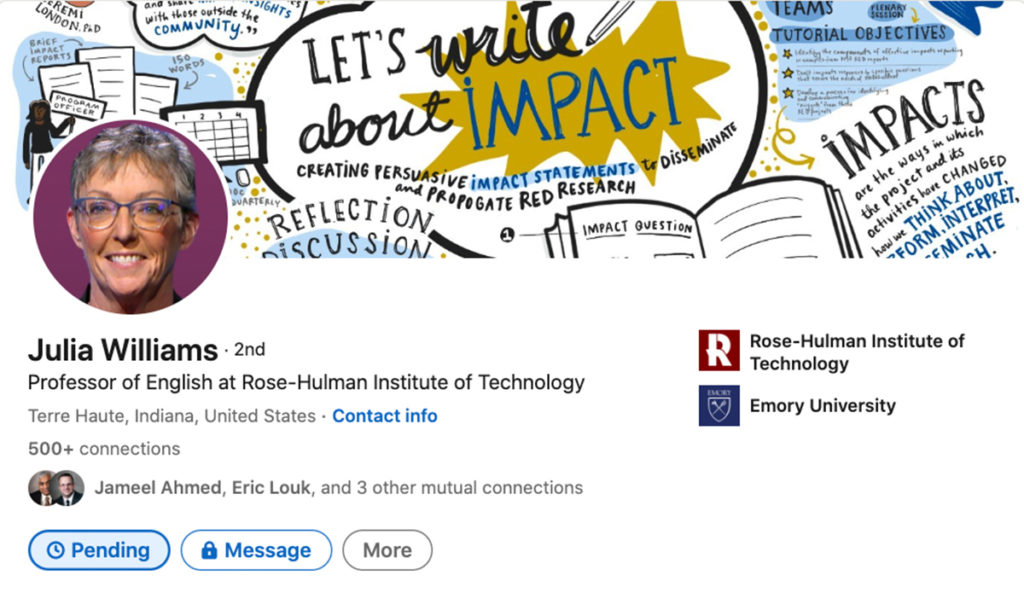
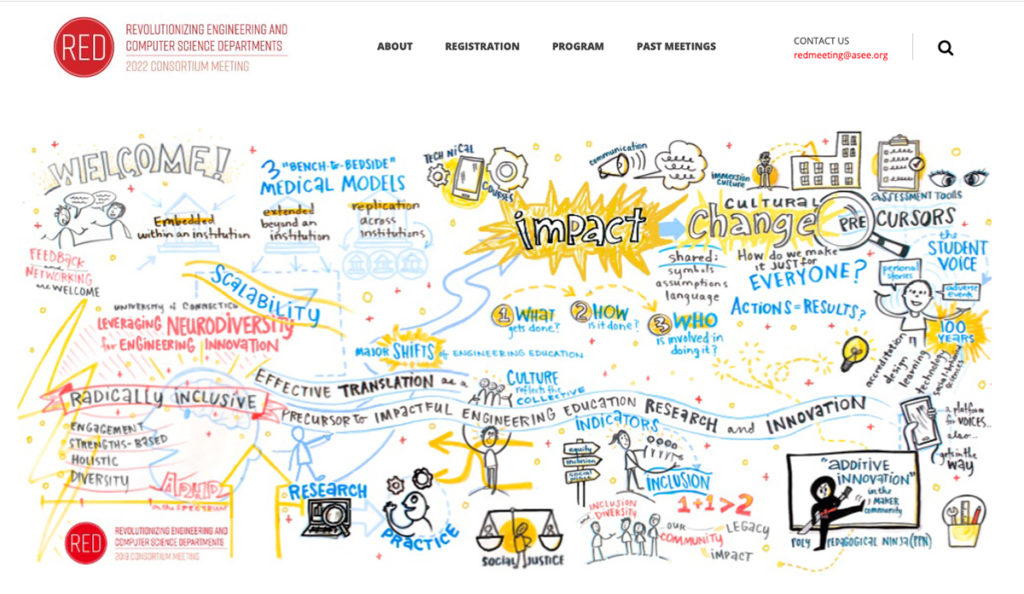
[JR: More recently, 1. JW told me how she came across a call for proposals for a convening funded by the NSF called Equity in STEM. It was unusual in that they requested a “visual abstract” – but she was easily able to incorporate several of the images from our projects in her workshop proposal on Tools for Change; and 2. An NSF program officer included two of the images in her remarks at a civil engineering conference, while reviewing the components of the RED program]
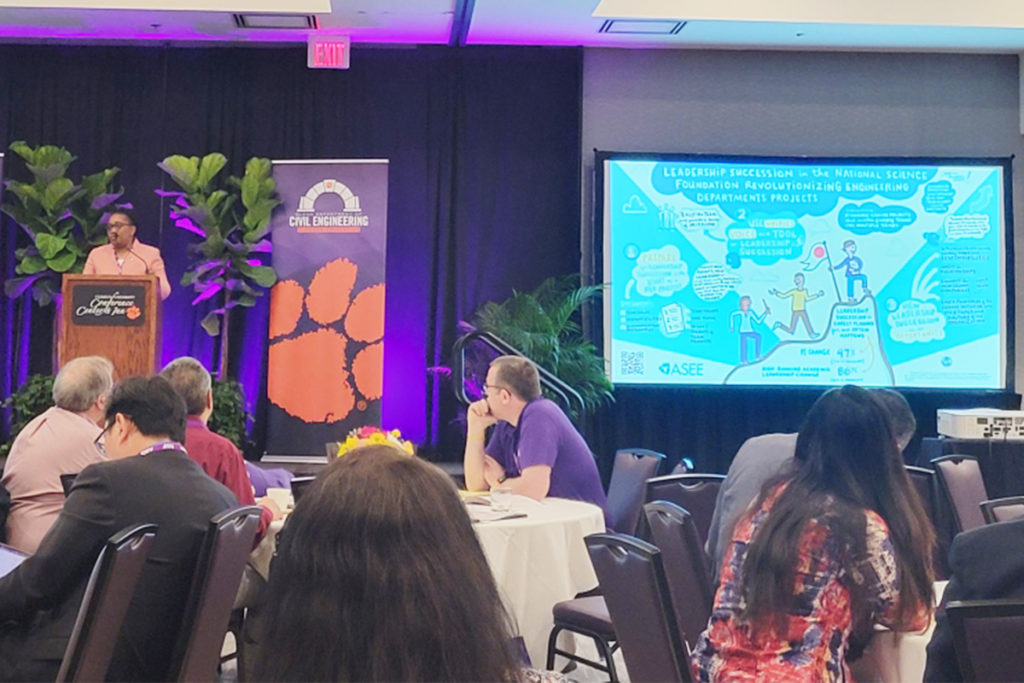
Is there anything else you would like to add?
JW: Julia’s skill lies in listening carefully to the content of your project and translating that content into powerful images. I am constantly amazed at her ability to take on ideas and concepts from a variety of fields and turn them into visuals that many people can see and understand. I value what she brings to our collaboration and how she elevates my own professional reputation and impact with my colleagues and project stakeholders.
JR: Thank you so much!
